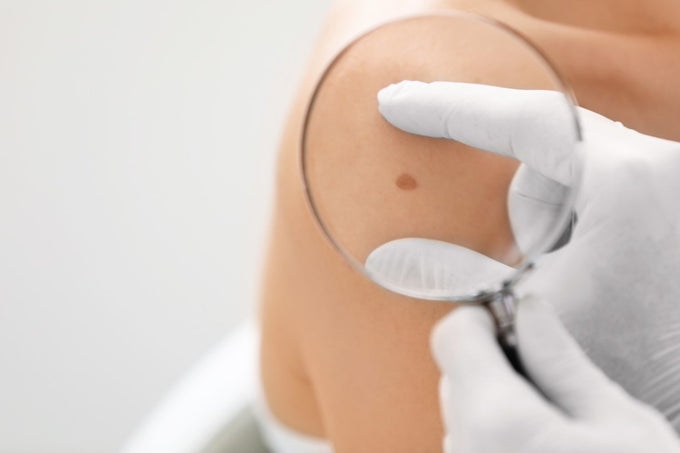When Should You See a Dermatologist?

Medical Advice Disclaimer: This content is not intended to be a substitute for professional medical advice, diagnosis, or treatment. Always seek the advice of your physician or qualified healthcare provider. Never disregard medical advice or delay care because of something you have read in this content.
Seeing a dermatologist is considered a cosmetic luxury by many; however, dermatologists are experts at far more than anti-aging support.
According to Dr. Goldstein, a dermatologist and the founder of Modern Ritual, the most common reason for a visit in her practice is to conduct a skin examination for patients that carry a high risk of skin cancer.
Why Should You See a Dermatologist?
Here are a few reasons for a dermatology visit:
- Skin checks (skin cancer prevention)
- Skin cancer diagnosis and treatment
- Warts
- Acne
- Burns
- Skin hyperpigmentation and other signs of aging
What Do Dermatologists Recommend For Skin Maintenance?
Dr. Goldstein recommends a holistic approach to sun protection. She states that many individuals want to just use sunscreen, but an entire “sun protective program” is essential.
Here’s how she recommends to structure a sun protection program:
- Putting on reliable sunscreen that you are willing to use daily, and reapply as necessary.
- Wearing UPF clothing and swimwear.
- Wearing Sun protective hats.
- Reapplyin of sunscreen when out for more than 1 hour.
- Seeking shade throughout the day.
- Avoiding direct sun exposure in the midday.
Should Those More at Risk of Developing Skin Cancer Take Extra Precautions?
Those who are more at risk for skin cancer should be extra attentive to their sun protection program. Risk factors for skin cancer include:
- Multiple moles.
- History of using tanning beds.
- Personal history of skin cancer.
- Family history of skin cancer, especially melanoma.
How To Get A Dermatology Appointment
It’s no secret that the wait times to see a dermatologist are long (sometimes 3 to 6 months or more). For this reason, primary care offices have become more well-versed in common skin issues, and also in setting up virtual dermatology consultations.
If you have an urgent dermatological symptom, make sure to report it to the office scheduler so they can arrange for you to be seen in an appropriate timeframe, or connect you with your PCP or emergency care as necessary.
Here are urgent signs and symptoms to watch out for:
- Infection (pain, swelling, redness, fever).
- Rash with a fever.
- Rapidly growing nodules or growths.
- Changing mole.
- A sore that won’t heal within 1 month.
- Severe itching.
Concluding Thoughts
If you are considering seeing a dermatologist, speak with your primary care provider to see what the most cost-effective and necessary medical care would be in your situation.
For ideas on how to complete your personal sun protection program, visit UV Skinz for a wide selection of sunscreen products and UPF 50+ clothing and hats.







